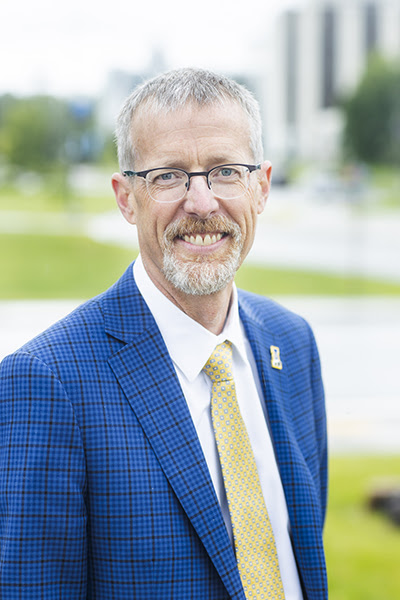Friday Focus: Back to the dialogue agreements (again)

UAF Chancellor Dan White
Jan. 28, 2022
— By Dan White, chancellor
I have written about, or referred to the dialogue agreements quite a few times in my Friday Focus columns over the last couple years. These dialogue agreements are very similar to President Pitney’s leadership mantra for the UA System and not unlike the agreements that most organizations adopt as best practices for engagement and interaction. In fact, they are also very similar to the ground rules for the anti-racism training that UAF leadership is currently engaged in. They focus around being present, respecting each other, and creating physical and psychological safety. One of the most important and common tenets, in one form or another, is “assume good intent.” Sounds easy enough. More and more, though, it seems to be in precious little supply. So why isn’t assuming positive intent just automatic?
I would be willing to bet there is a library worth of explanations. I would also bet that nearly all explanations could be boiled down to two words: “we’re human”. It is well known that our brains process information first through a threat response mechanism. And for the most part, that has and continues to serve us well – sort of. For at least the last million years it has kept us safe from many threats, not withstanding the need to avoid being eaten by saber-tooth tigers. In fact, I suppose that saber-tooth tigers helped hone our especially effective threat response mechanism. But even today it keeps us safe from threats. It is because our threat response process bypasses our thoughtful analysis process that we are able to jump out of an intersection before being hit by a car, for example. There you go, we are hard-wired for a threat response. It seems we are hard-wired to first assume bad intent.
The failure to assume good intent may also be learned from our universe of experiences. Whether they are real or perceived slights or misdealings leading to our own insecurity. The misgivings that lead to these assumptions accumulate over our history making it pretty intractable. I think in non-scientific circles we call it baggage. I know I am not alone in the baggage I carry around with me. And that baggage has been shaped by the frequency/intensity relationship of my interactions. Maybe small things that have occurred at a regular frequency over a long time or big things that occurred maybe just once. What’s more, everyone is carrying around their own “stuff” and whatever I perceive as negative intent from others likely has very little to do with me. The converse is true as well. Offering forgiveness and kindness in those moments is valuable to our relationships, our own sense of well-being, and our connection with each other. It is also valuable to the important mission of our great University.
Each one of us is most effective when we are working towards a positive future. Working on a vision that means something and in an environment of positive intent. Our university has a strategic plan and some lofty but achievable goals. We have a very positive future. It is all of our work that gets us there. It is all of our positive intents added together. So for me, I will keep my threat response relegated to saber-tooth tigers and speeding vehicles. Beyond that, I’ll assume positive intent. I hope you join me.
Friday Focus is a column written by a different member of UAF's leadership team every week.


